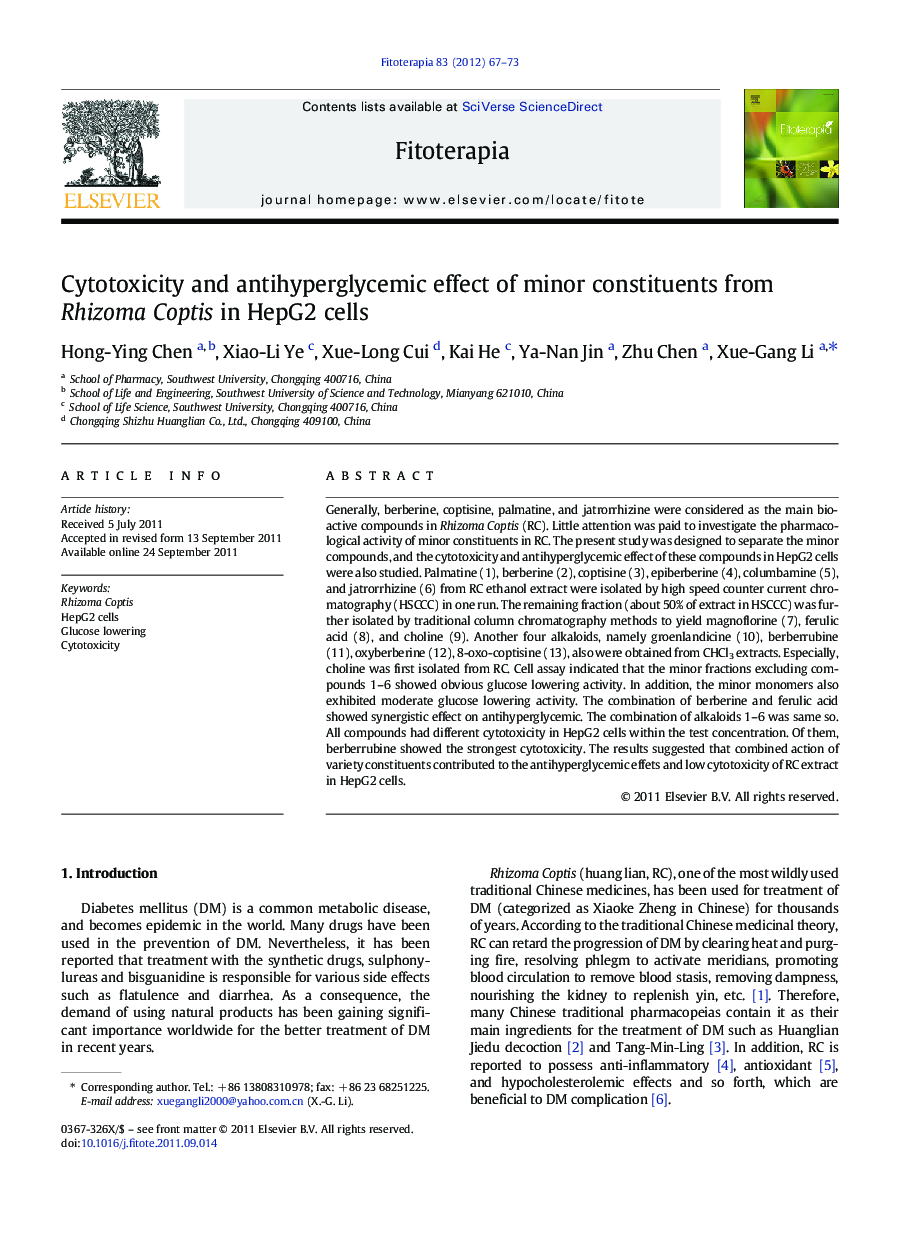| Article ID | Journal | Published Year | Pages | File Type |
|---|---|---|---|---|
| 2538957 | Fitoterapia | 2012 | 7 Pages |
Generally, berberine, coptisine, palmatine, and jatrorrhizine were considered as the main bio-active compounds in Rhizoma Coptis (RC). Little attention was paid to investigate the pharmacological activity of minor constituents in RC. The present study was designed to separate the minor compounds, and the cytotoxicity and antihyperglycemic effect of these compounds in HepG2 cells were also studied. Palmatine (1), berberine (2), coptisine (3), epiberberine (4), columbamine (5), and jatrorrhizine (6) from RC ethanol extract were isolated by high speed counter current chromatography (HSCCC) in one run. The remaining fraction (about 50% of extract in HSCCC) was further isolated by traditional column chromatography methods to yield magnoflorine (7), ferulic acid (8), and choline (9). Another four alkaloids, namely groenlandicine (10), berberrubine (11), oxyberberine (12), 8-oxo-coptisine (13), also were obtained from CHCl3 extracts. Especially, choline was first isolated from RC. Cell assay indicated that the minor fractions excluding compounds 1–6 showed obvious glucose lowering activity. In addition, the minor monomers also exhibited moderate glucose lowering activity. The combination of berberine and ferulic acid showed synergistic effect on antihyperglycemic. The combination of alkaloids 1–6 was same so. All compounds had different cytotoxicity in HepG2 cells within the test concentration. Of them, berberrubine showed the strongest cytotoxicity. The results suggested that combined action of variety constituents contributed to the antihyperglycemic effets and low cytotoxicity of RC extract in HepG2 cells.
Graphical abstractFigure optionsDownload full-size imageDownload high-quality image (281 K)Download as PowerPoint slide
